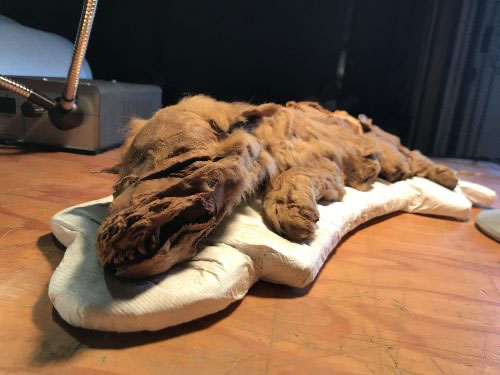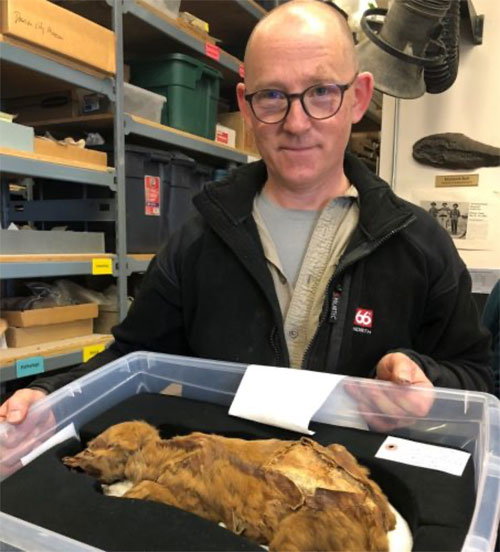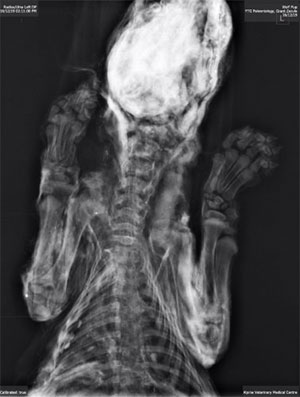
Research offers glimpse into life of 57,000-year-old wolf pupBy JEFF RICHARDSON
December 23, 2020
The mummified female pup was discovered in 2016, when a Yukon miner found the remarkably well-preserved specimen while excavating in the Klondike gold fields. The animal, which probably died when its den collapsed about 57,000 years ago, was preserved by the surrounding permafrost. Those conditions helped make it the oldest and most complete ancient wolf ever discovered.
Grant Zazula, a paleontologist with the Yukon Government, pulled together a team of researchers, led by Julie Meachen of Des Moines University, to study the young wolf through the analysis of its skeletal X-rays, hair samples and tooth enamel. Their findings were detailed in the Dec. 21 issue of the journal Current Biology. “For scientists, this is a different kind of gold,” said Matthew Wooller, the director of the University of Alaska Fairbanks’ Alaska Stable Isotope Facility and a contributor to the paper. The team named the pup Zhùr, which means “wolf” in the local Indigenous Hän language. Her bone structure indicates that she died at 6-7 weeks old, an age when modern gray wolves in the region have typically just weaned from their mother.
By studying stable isotopes from hair and tooth samples at the Alaska Stable Isotope Facility, researchers were able to determine that the pup’s mother had a diet heavy in aquatic resources. That probably meant seasonal consumption of fish from the Klondike River, which still has a modern-day spawning population of Chinook salmon. Some wolves in Interior Alaska can get much of their summer diet from fish, making it a plausible scenario for one of their ice age relatives.
Through DNA testing of both Zhùr and 29 other ancient and present-day wolves, researchers were also able to connect her genetics to ancient Beringian and Russian gray wolves, as well as modern gray wolves. That includes individuals from both Eurasia and North America, highlighting the connections maintained between those continents as animals moved across the Bering Land Bridge. Meachen, an associate professor of anatomy at Des Moines University, said the various tests produced a consistent picture of how Zhùr and other wolves lived in the region during the Pleistocene era. “They told the same story, and that doesn’t always happen in paleo work,” Meachen said. “This was a case where ancient DNA and isotope techniques were all telling the same story.” The mummified carcasses of large mammals are almost never found in Alaska and Yukon, making the opportunity to study Zhùr especially rare. However, such discoveries may become more common in the future as climate change and eroding landscapes expose more areas that have been frozen for millennia. “I feel a sense of privilege and gratitude for being able to work on a piece like this,” Wooller said. “A silver lining of climate change is that we may see more of them.” Zhùr is now on display at the Yukon Beringia Interpretive Centre in Whitehorse, Canada. Other authors include Benjamin D. Barst and Juliette Funck, University of Alaska Fairbanks; Molly Cassatt-Johnstone and Beth Shapiro, University of California, Santa Cruz; Carley Crann, University of Ottawa, Jess Heath, Alpine Veterinary Medical Center, Whitehorse; and Elizabeth Hall, Susan Hewitson and Grant Zazula, Government of Yukon.
On the Web:
|
|||||||


